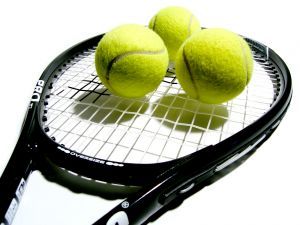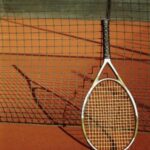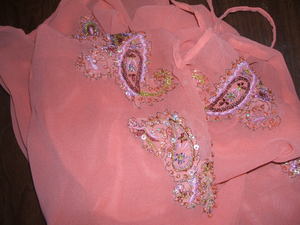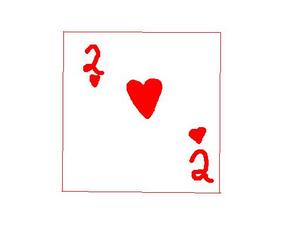Not all tennis racquets are made equal. Do you know that there are various categories of tennis racquets available and in these there are a lot of variations in the features? The large variety of racquets available in the stores makes choosing the right one for your needs a really daunting task. In order to make the right choice you must be fully aware of the various features available in tennis racquets. This knowledge will help you to select the racquet that most suits your temperament, style of play and level of experience. Here is an overview of the various features available in tennis racquets and how they influence the player’s performance. This information will help you to make a well-informed decision.
There are three major categories of tennis racquets available. They are the Game Improvement Racquets, Control or Player’s Racquets and the Tweener Racquets. The game improvement racquets are the power oriented ones sold under that name. They are the ones that have the over size or super over size heads. They are lightweight, stiffer and longer with evenly or head-heavy balanced features to provide extra weight in the hitting zone. Players, who have slower and shorter swings and want more power from them, prefer the game improvement racquets.
College team members, high-level club players and professional tennis players usually prefer the player’s or control racquets. These category of racquets have smaller heads, are thinner, heavier in weight, beams are more flexible and are balanced head light for maneuverability. Although they are low power, players using these racquets prefer them because they can have better control by using their own power. These are available in standard as well as extended length varieties.
The features offered by tweener racquets consist of a blend of the player’s and game improvement racquets. They are usually of extended length, are balanced between head heavy and head light and the head sizes are mid-plus. Intermediate and advanced players prefer them because of their extra maneuverability along with low medium to medium high power.
The features of tennis racquets like head size, length, frame stiffness, weight and balance, string pattern and grip/handle systems, have an important bearing on racquet selection. The power of a racquet is determined by its head size. If everything else is equal then a racquet with a larger head will deliver more power than one with a smaller head. More sweepshot and larger hitting area is offered by a racquet with a larger head. Thus on off center hits the player, using a large head racquet, gets more forgiveness. Beginner and intermediate players prefer the larger racquets for more power and larger sweepshot whereas professionals seeking more control prefer the smaller ones.
The legal limits of length of tennis racquets meant for playing tournaments is between 27 inches and 29 inches. The standard ones are 27 inches long. Some players prefer the longer ones because they afford enhanced reach on groundstrokes, slightly more power and extra leverage on the serves. To maintain their maneuverability the longer racquets are made lighter, otherwise they will become unwieldy.
Frame stiffness is also important in the selection. Accomplished tennis players prefer flexible tennis racquets because they offer more control. A stiff racquet on the other hand offers more power. Professional players prefer to use their own power so that they are in more control. However the extent of stiffness of the racquet depends on the types of players and their ability. The beginner or intermediate player may find it difficult to control because of the deflection of the flexible racquet. A stiff frame racquet will transmit more impact to the shoulder, elbow and wrist of the player. Thus players with injury to the elbow, wrist or shoulder will benefit from the flexibility of a racquet. It all depends on individual comfort. Also racquets with less stiff frames generate more spin than stiffer ones.
Weight and balance of a tennis racquet influence how a racquet feels when it is lifted or swung in the court. Other things being equal a racquet that is heavier is more stable, more powerful and transfers less amount of shock than the lighter one. However where more maneuverability and control are necessary the lighter racquet is preferred because the player can swing it faster. Tennis racquets come as either head light, head heavy or evenly balanced. Professional players prefer heavier head light racquets as they allow more maneuverability and control. Beginners and intermediate players prefer lightweight head heavy racquets to the weighted and balanced racquets
String pattern of tennis racquets is a feature often overlooked by non-professional player. Professional players know that string pattern has a lot of influence over several aspects of the racquets feel and overall performance. String patterns are of two types, open and dense. As the open string pattern allows more spin players requiring more spin prefer it. However the string durability is reduced in this case. On the other hand, the denser string patterns don’t deflect much and hence the potential for spin is less. However, string durability is increased and that is why players with a hard-hitting topspin prefer it.
Today tennis racquets come with handles having vibration and shock dampening systems. This is done to increase the comfort of the player, which can get sacrificed with racquets getting lighter and lighter.
To conclude, if the racquet you are presently using is too powerful and you want more control then you must look for a racquet that is lighter towards the head, i.e. one that has a lower swingweight, like the tweener racquets. However, if your racquet is not powerful enough then you should go for a racquet that is more weighted towards the head. For this purpose game improvement racquets are more suited. If you want your racquet to be easier on the arm then go for a racquet that is less stiff and head light as it will put less strain on the swinging arm.






